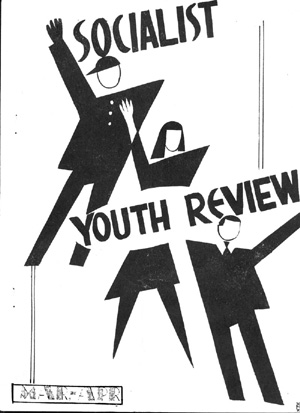| The Socialist Youth Review was a publication of the
Workers Party, which was a Trotskyist political party which was formed by
Max Shachtman after he was expelled from the Socialist Workers Party in
1940. After 1949, the group was called the Independent Socialist
League and later merged with the Socialist Party.
The collection consists of the publications, with each being about 30
pages long. They cover a range of contemporary political issues,
both domestically and internationally.
Due to the length of these materials,
they have been divided into various sections in order to enable the
files to load more quickly. |
 |